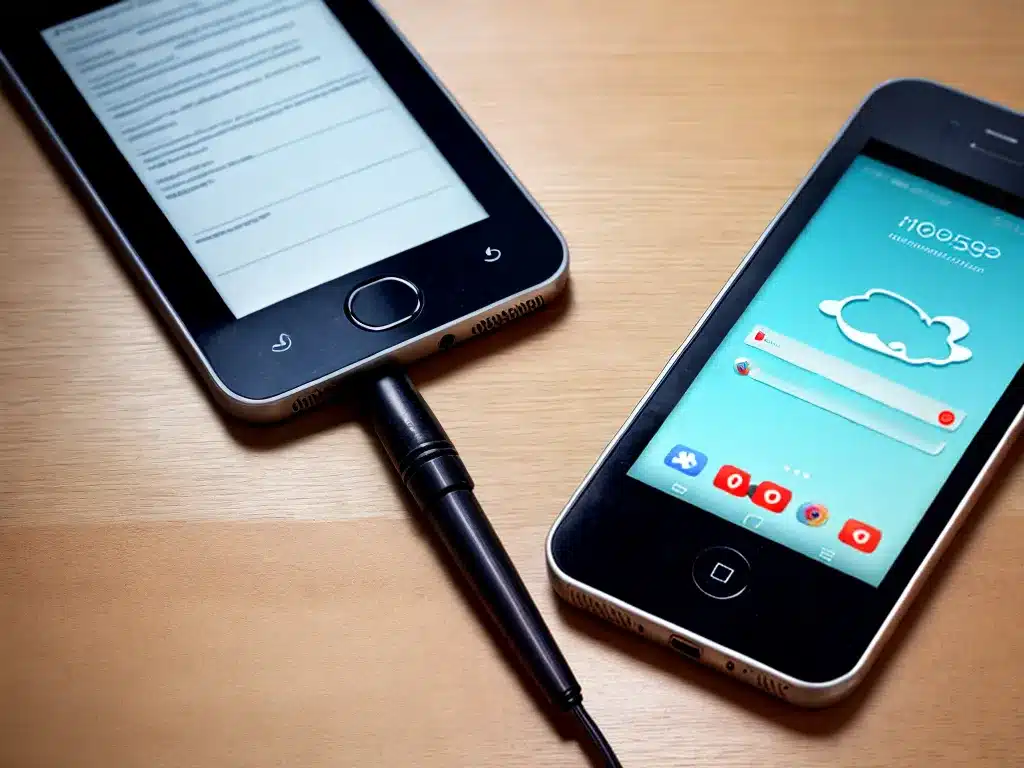
Recovering data from a physically broken mobile phone can seem daunting, but with some patience and the right tools, it is possible to salvage your photos, contacts, and other important information. Here is a step-by-step guide on how I was able to successfully recover data from my shattered iPhone.
Assess the Damage
The first step is to assess the extent of the physical damage to determine if data recovery is feasible.
-
Carefully examine the phone and make note of any cracks, scrapes, or exposure of internal components. Be very gentle as you don’t want to cause further damage.
-
Check if the screen still illuminates when you press the power button. A black, blank, or distorted screen indicates damage to the display or graphics components.
-
Determine if the phone still turns on and is able to charge. Extensive water damage or cracks exposing critical components can prevent the device from powering up.
-
Test basic functions like making calls, taking photos, and launching apps. Partial functionality suggests the core logic board is still intact.
If the phone won’t power on at all, has clear signs of catastrophic internal damage, or no longer charges, data recovery will be very difficult or impossible.
Back Up What You Can
If the phone powers on and basic functions still work, immediately back up any data you can access.
-
Launch the Photos app and transfer any pictures and videos to a computer or cloud storage. Damaged phones may have limited life left.
-
Sync contacts, calendars, notes, and messages to the cloud if possible. Services like iCloud allow partial backups of data.
-
Consider manually transferring files via USB cable to a computer if the cloud backup doesn’t capture everything.
Don’t reset or restore the device, as this will wipe data. Get as much as possible off the phone before attempting recovery methods.
Disassemble the Phone
To directly access and salvage data from the phone’s storage, you’ll need to disassemble it and remove critical components.
This requires technical skill and special tools. If you damage components during disassembly, it can make data recovery impossible. Consider hiring a specialist at this stage if you lack electronics repair experience.
Key steps include:
-
Purchase a screwdriver kit, spudgers, and ESD-safe mat. Use proper tools to avoid damage.
-
Follow online disassembly guides specific to your phone model. Instructions and component layouts vary.
-
Carefully detach the screen, battery, logic board, charge port, and other modules. Avoid flexing or warping boards.
-
Locate data chips like the NAND flash storage and memory chips. Don’t remove unless necessary.
Document the disassembly process with photos to aid reassembly later. Remove only the minimum components to access data chips.
Attach Data Chips to a Reader
With the phone disassembled, you can directly access storage chips and attempt data recovery.
-
Carefully remove any shields, covers, or adhesive over chips. Avoid bending chip leads.
-
Purchase an appropriate chip reader dock for your phone’s storage type – eMMC, UFS, microSD, etc. Readers can be expensive.
-
Gently insert the storage chip into the reader dock following pin alignment guides. Improper insertion can destroy data.
-
Connect the reader to a computer, usually via USB. Special software can interface with the raw storage chip.
A few companies like Phone Savers sell specialized readout tools and software for directly accessing mobile storage chips. The right reader can even recover data from chips that look physically damaged.
Scan and Recover the Data
With the storage chip connected to a reader and computer, data recovery software can scan for retrievable information.
-
Use data recovery programs likeDisk Drill to scan the raw chip. This can take hours depending on capacity.
-
The software should detect and reconstruct folders, photo files, app data, messages, and other content. Preview files before recovery.
-
Select files and folders you wish to recover, choosing a target folder on the computer to save them.
-
Once data is recovered, carefully disconnect the chip from the reader dock and reassemble your phone (if desired).
Don’t overwrite the storage chip during recovery scanning – the software needs to read the original data. With luck, much of your data can be salvaged directly from the chips even if the phone is damaged.
Seek Professional Help if Needed
For severe physical damage or if you don’t feel comfortable disassembling mobile devices, seek help from a professional data recovery service.
-
Services like DriveSavers and Desert Data Recovery specialize in mobile devices and have advanced tools.
-
They can repair phones, desolder memory chips, access raw NAND, and reconstruct lost partitions. Very few devices are unrecoverable.
-
This level of service is expensive but may be worth it for valuable data. Expect to pay hundreds of dollars.
With the right tools, patience, and care, I was able to successfully recover my pictures, contacts, and app data from a badly damaged iPhone. While daunting, data recovery from physically broken mobile phones is possible in many cases with some DIY work. Seek professional assistance if your damage exceeds your technical expertise.












